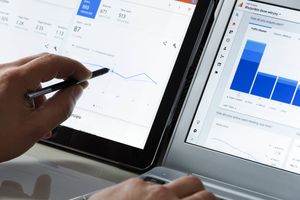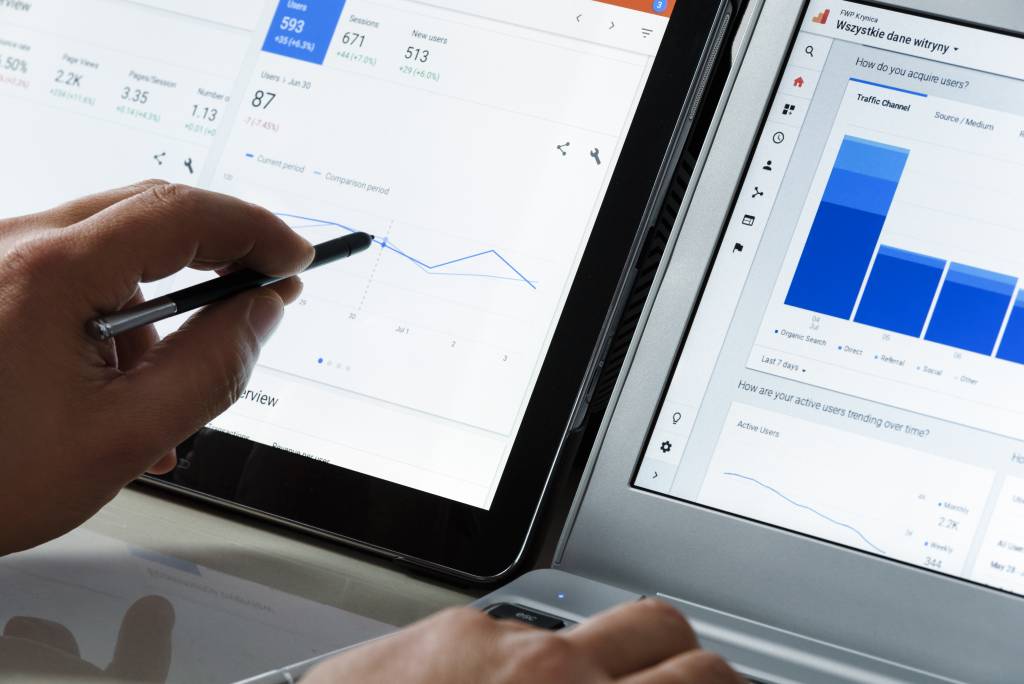
3 tips for a better AdWords campaign in the automotive industry!
11 februari 2018, PaulCase: your own conversion funnel; fuel for online marketing success

A relevant conversion funnel is necessary for better online marketing. In this case, for Nieuweautokopen.nl (part of Marktplaats), I will show how we convert our (antique) AIDA or Touch / Tell / Sell funnel into much more relevant metrics, step by step, and what you can do with that.
Nieuweautokopen.nl setup
On Nieuweautokopen.nl you are looking for a new car. Once you have found it, you fill in a form (the main conversion), and you come in contact with car dealers. Our goal here is to achieve more conversions from people you have something to do with as a dealer. With the deployment of 3 Google Analytics features we deliver the necessary fuel for:
– Better targeting
– Better understanding of the customer journey
– Better conversion optimization (CRO)
1. Better targeting
The first step in creating more specific and more relevant data is setting up Custom Dimensions. Maxlead (our partner for Google Analytics) did this setup when we switched to
Universal Analytics. With these Custom Metrics you can save specific values per unique user. With us for example a car brand, model and engine content.
As a marketer you can use this data directly, for example in Paid Search. By adjusting our ads (a Ford viewer gets a Ford advertisement in Google), we saw an average double digit conversion increase. The beauty of our profession is (usually) that if you are more relevant, more people click on your ad, but also that the costs for your ad drop.
In addition, we can adjust our bids to the value of a lead for our dealers. By bidding more or less on customers, based on the value of those customers, we increase both the conversion and the average value per conversion for the dealers. For example, we bid less on specific brand / model combinations, which we call ‘dreamcars’. Many people click here, some models also provide a high conversion rate, but the value for the dealer was limited.
2. Your own funnel
In step 2 we set up Custom Metrics. With this we measure specific places that users visit. This way we set up our own funnel, for most sites a significant improvement compared to the standard funnel in Google Analytics. We fill that funnel with both direct conversions (such as completing a lead form) and with indirect conversions (viewing a photo on the product page or scrolling on the homepage) of which we want to see the influence on the customer journey. Some of these outcomes were easy to come up with in advance (a visitor who neatly goes to product pages via the homepage, and then converts), but we also learned new things about the customer journey. Even better; other than we expected, our customer journey is most like a… pretzel.
Examples? A user who looks at a photo for more than 15 seconds is ready to convert. On the other hand, the use of increasingly extensive filtering properties hardly says anything about conversion.
3. Combine and win
Step 3. Up to now, I have been writing about things that you may have been applying in practice for a couple of years now: flare-ups, using specific values and measuring micro conversions. However, the strength lies in combining specific values per user, with all your conversion points. This can be done with Calculated Metrics, values that you set yourself based on the above information.
The great thing is that with this set up you can create dozens of your own funnels, with metrics on which you can optimize. Let’s look at a (simple, fictional) example about brand and a few micro conversions for traffic that specifically come in on product pages. This is relatively expensive traffic because the intention of the user is known, which is why we want to optimize it.
Based on these figures, we see that traffic for Volkswagen and Opel converts relatively well (5% and 4%), and BMW traffic less well (1%). Based on this, we can adjust our bids. Even better, by involving dozens of other factors, we can carry this far, especially in Paid Search.
Another example. Because we have good insight into our own funnel, we can find something from the different steps. Given our relatively simple registration form, we find a conversion of ~ 50% from funnel start to lead pretty low. Fuel for CRO! We have set up multiple A / B tests for the registration form. This was especially successful by making the form simpler and by giving the visitor more security, increasing the conversion, without lowering the customer value.
Conclusion
By using Custom Dimensions, Custom Metrics and Calculated Metrics in Google Analytics you can make a conversion funnel, specifically for you. With this powerful funnel you can target better, chart the customer journey of your visitor better, and be more specific with A / B testing. If you make good use of the data you obtain through these steps, you will become doubly relevant. Beautiful for your user, and for you as Online Marketeer.
Author: Tobias Braam
Online Marketing Strategist with a bias towards action. Growth hacker. Incremental innovator. Loves data, CRO and storytelling.




